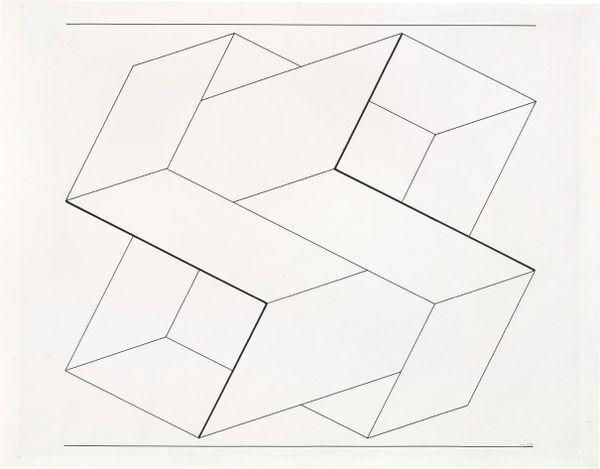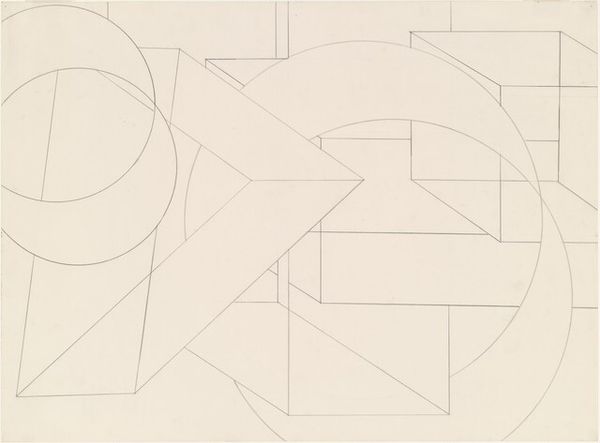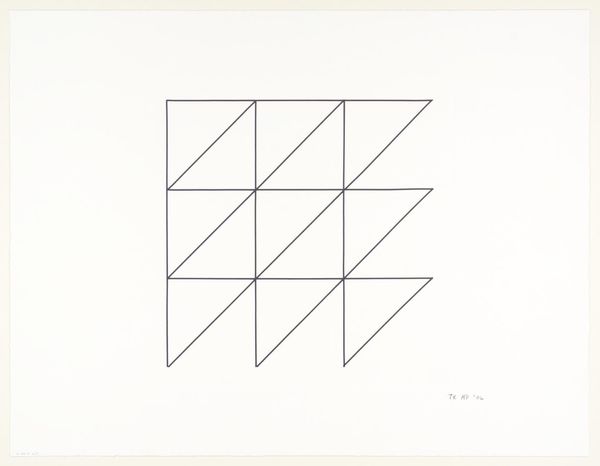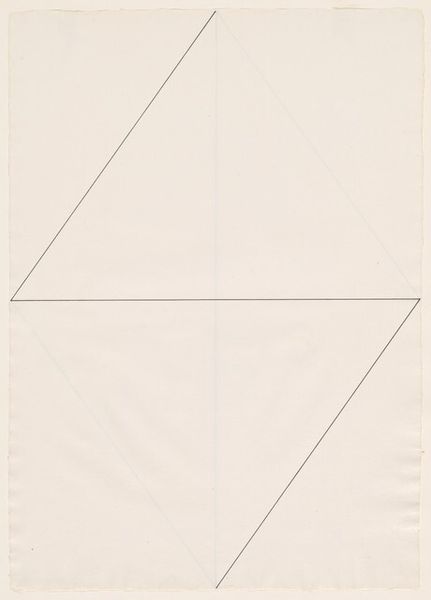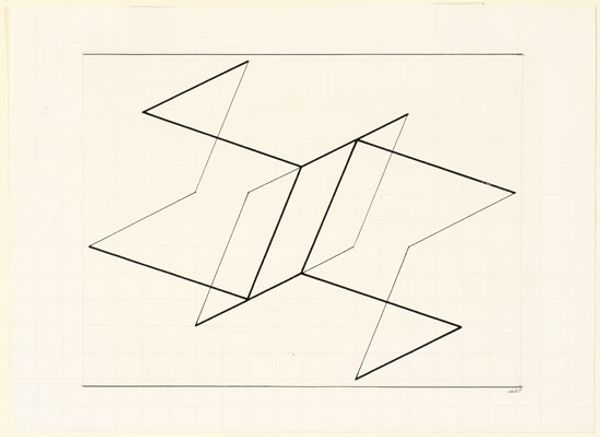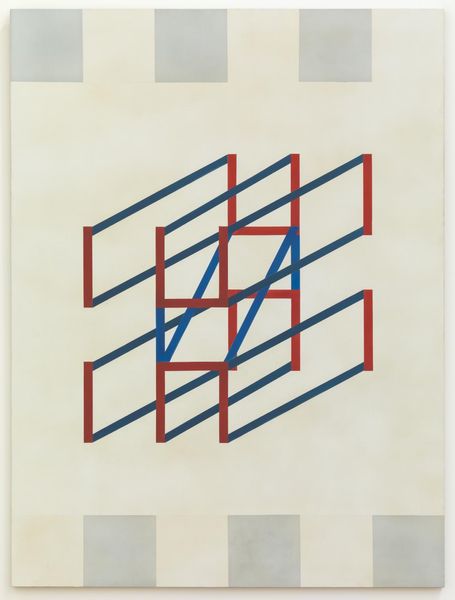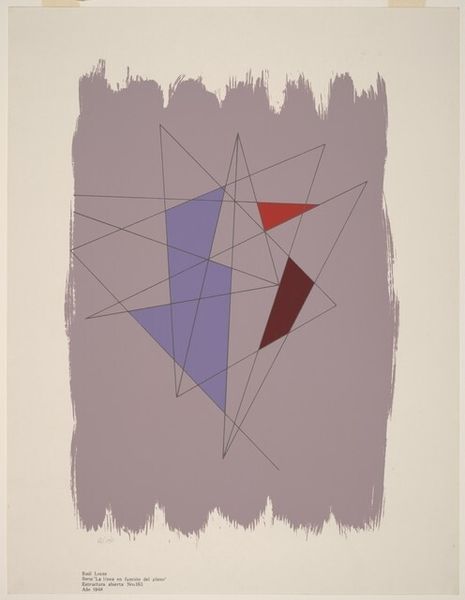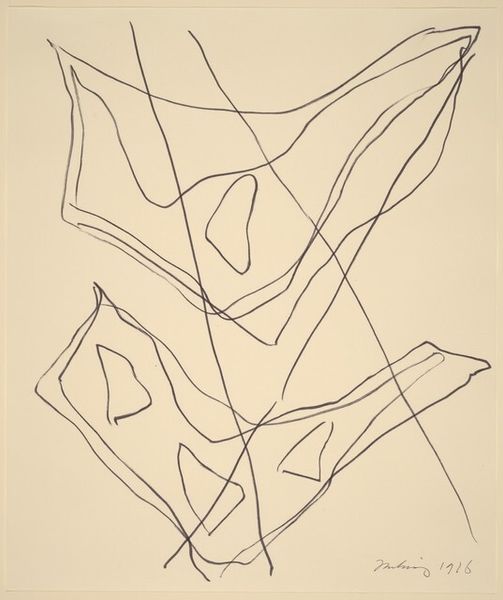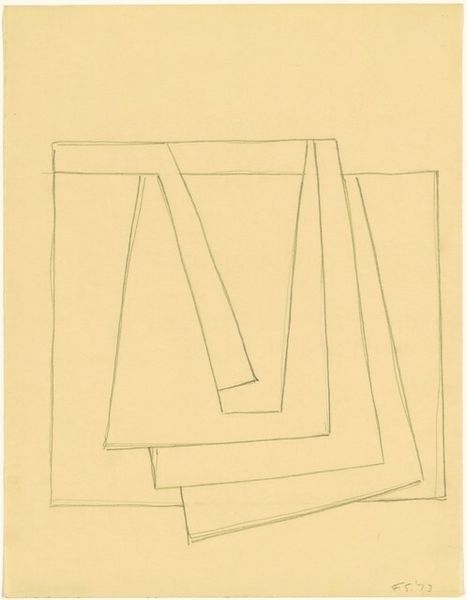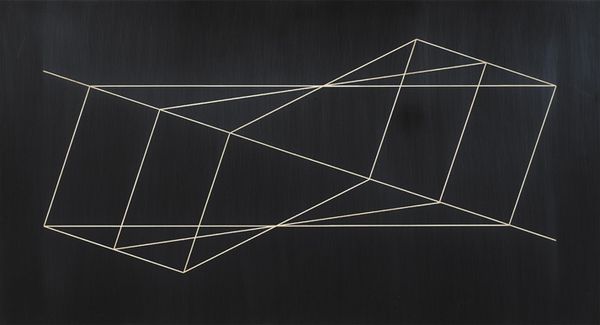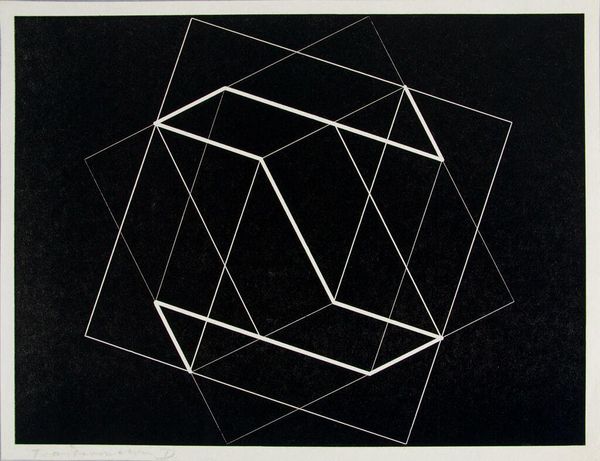
drawing
#
drawing
#
geometric
#
abstraction
#
line
#
bauhaus
#
modernism
Copyright: Josef Albers,Fair Use
Curator: At first glance, it feels like I've stumbled into a quiet corner of the Bauhaus, all clean lines and thoughtful geometry. There's a calmness to it, wouldn't you agree? Editor: Absolutely. We are looking at Josef Albers’s "Structural Constellation VI," from 1960. Executed as a drawing, it’s a compelling study in geometric abstraction. The formal elements, particularly the linear quality and the interplay of positive and negative space, are striking. Curator: Space. Yes! It teases you—pushing and pulling at what's 'there' and what isn't. It reminds me a little of those impossible staircase illusions, where your brain just can’t quite decide which way is up. What's the technique at play here? Editor: Semiotically, the work presents a paradox. Albers uses line—the most fundamental element of drawing—to suggest volume and depth. The carefully calibrated juxtapositions create a sense of implied form. You get the sense it is deconstructing architectural principles. The straight lines, though simple in their rendering, construct a complex interplay of spatial relationships, typical of his Bauhaus sensibilities. Curator: Deconstructing, or perhaps revealing? Albers was obsessed, wasn't he, with how we perceive things, how colors change depending on their surroundings. He stripped things down to their bare bones, like in his Homage to the Square series, almost challenging us to really *see*. Editor: Precisely! This work epitomizes Albers’ exploration of perception through carefully planned composition. We interpret it through shape and line relationships as much as through actual dimensionality. In philosophy, particularly Gestalt psychology, we see similar ideas – the whole is different from the sum of its parts. This constellation gives you all these possible parts and asks that you give sense to the entire construct. Curator: It really does feel like constructing a whole new reality with just a few precisely placed lines, doesn't it? Like finding order and a certain quiet beauty in minimalism and simple acts of spatial intervention. Editor: It invites a level of attentive viewership; each viewing might offer an alternate configuration. Its strength lies in its self-contained logic that opens us to experience space, both tangible and illusional.
Comments
No comments
Be the first to comment and join the conversation on the ultimate creative platform.
